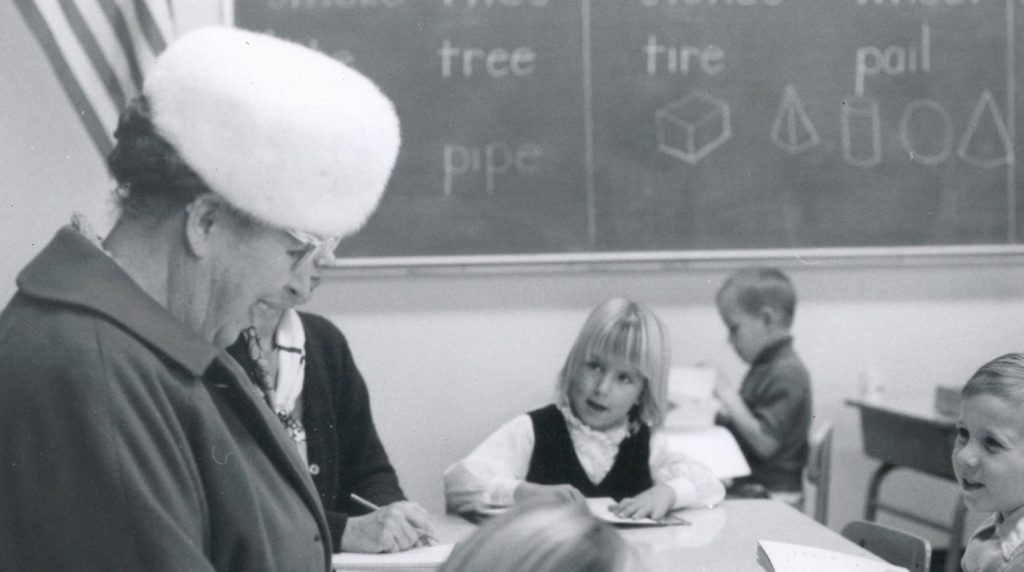Joel Reed, Head of School, Howard School

I have been writing this column for years and I wonder how I could have missed a visit to the Howard School, the oldest operating private school in Santa Barbara. Once located on San Ysidro Road in Montecito, the 1934 designed campus, now the Laguna Blanca Lower School, is a community landmark. On a crisp autumn day after a short drive to the Howard School’s present location in Carpinteria, I was welcomed by the head of the school, Joel Reed. Due to COVID-19 restrictions with a good deal of extra caution to maintain the safety of the in-person classes, we sat together under a shade tree located on an expansive lawn in front of the school. Masked, of course!
“Howard School has undergone changes over the past one hundred years but what remains is our dedication and our mission to teach the whole child,” stated Reed. “What began as morning lessons for six children at Hannah Howard’s Tea Kettle Inn in 1912 has developed into a modern campus serving students from preschool to eighth grade.” The school’s small class size provides each child the ability to achieve his or her full potential. In Montecito for 88 years, the school is the earliest independent elementary school on the Central Coast and Ventura County. “Our story is an interesting one,” Reed said. “I’ll bet we’re one of the only schools that can provide a historical perspective on how the twentieth century’s two world wars affected enrollment patterns.”
Hannah Howard and her husband, John, arrived in Montecito shortly after the 1906 San Francisco earthquake. Both Canadians, Hannah had taught school and John had earned a degree in pharmacology. After settling in Montecito as small farmers in 1911, they opened the Tea Kettle Inn. The next year Hannah began tutoring and the endeavor was so successful she decided to open a school. Early enrollment included six students but by 1914, attendance had grown to 75, forcing the closure of the Tea Kettle Inn so Hannah could concentrate on the school. By 1922 enrollment growth and increased traffic necessitated a relocation to San Ysidro Road. After Hannah’s retirement, her daughters remained until 1951 when the school was sold to Warwick and Eileen Carpenter, both local teachers, who continued the rigorous academic curriculum. In 1982 the school changed hands again to Richard and Judith Harber who brought the Carden curriculum and its philosophy with them.
The Carden Method was developed in 1934 by educational pioneer Mae Carden and was designed to accommodate the developmental progression of each individual child. Reading skills are taught through a sequential presentation of phonics, rhythm, and visual imagery to gain mastery of math and science in the early years and the interrelationships of class subjects and critical thinking in the later ones. Specialty programs including art, music, theatre, foreign language, technology, and physical education – along with courtesy and good manners – are central to a Carden education.

Joel Reed’s journey to Santa Barbara and the Howard School was not happenstance. The second in a family of five, Reed’s first school experience was at a Carden school in West Texas. “I remember how much I loved going to school. I looked forward to every single day,” he recalled. “I also remember a week when the kids were all supposed to be on their best behavior because Miss Carden was coming for a visit. I recall the hat, she always wore a hat!” The family’s move to Arizona, however, provided a different school experience for Reed. “Somehow going to school wasn’t that interesting anymore… it was too rote,” he remembers. “All you had to do was to give the teacher the answer and they’d leave you alone.” Based on Reed and his older brother’s experience, his mother opened a Carden elementary school in Flagstaff so that her younger children might also have a Carden education.
Graduating with an advanced degree from the University of Arizona, Reed began his teaching career after returning to Flagstaff to the school his mother established and ran as a middle and high school based on the Carden curriculum. “I had become fascinated by the Carden method of learning and what elements made it so special,” Reed said. “I discovered that its educational and core values penned so long ago by Miss Carden are even more relevant in today’s world – and at every grade level!” Eventually the Carden Foundation asked Reed to be a Carden educator and trainer, a task he relishes and continues to this day. In 2000, he arrived at the Howard School to reinvigorate the newly nonprofit educational institution. This year, Joel Reed celebrates his twentieth year as Head of School.
“The Howard School continues thanks to our Carden curriculum and its strong academic foundation,” Reed stated proudly. “The three R’s in Carden are reason, respect, and responsibility, a legacy that emphasizes that who you are is more important that what you are!” As a parent of two children who attended a Carden school, I understand Joel Reed’s enthusiasm and dedication. I have my own memories of Miss Carden’s frequent visits, her fuzzy hats and her lifelong lessons. As she penned so long ago, “Being grateful warms the heart and stirs it to share.”







You must be logged in to post a comment.